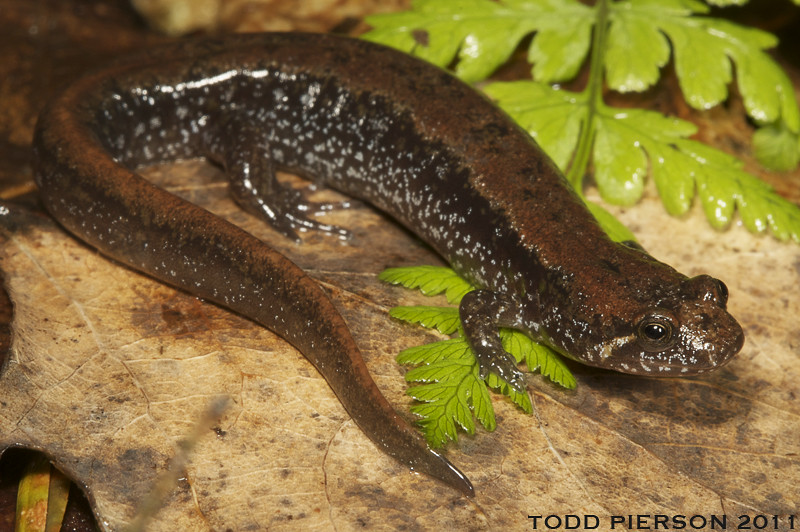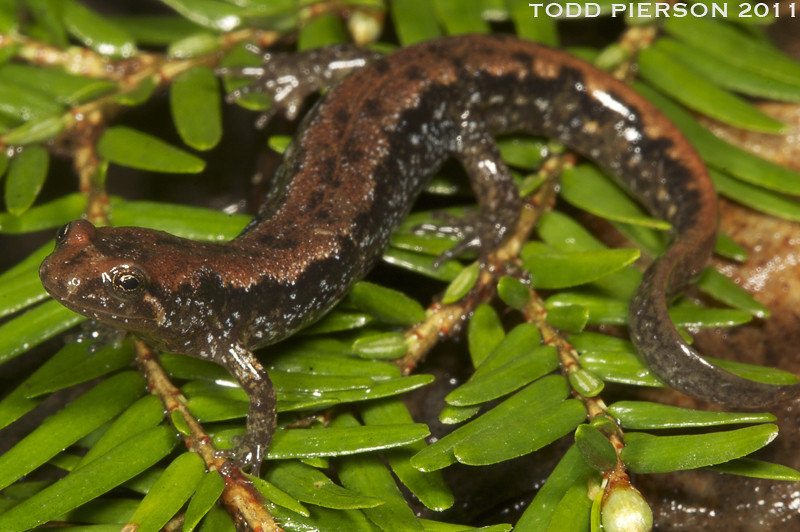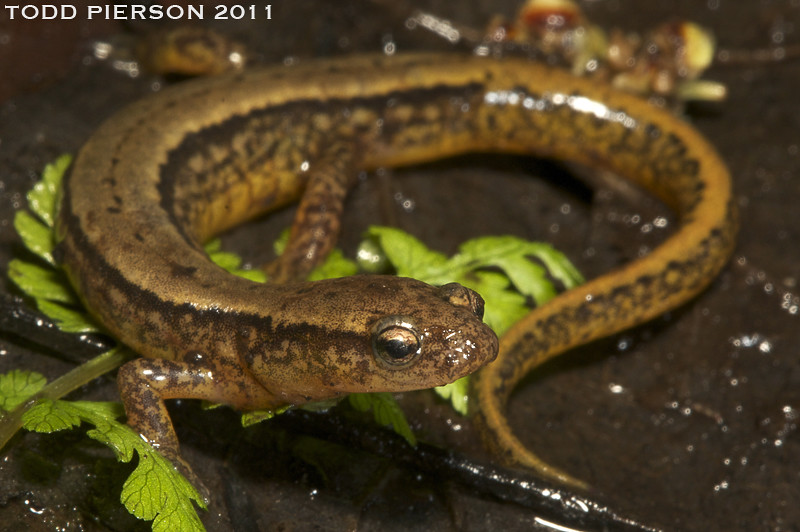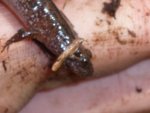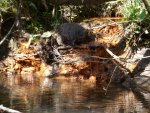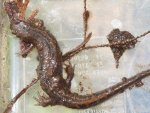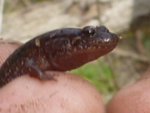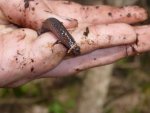In my very limited experience, all three species have been easy to differentiate at a glance, but the species complex appears to include several additional species, including more than one paedogenetic type (such as
E.aquatica), and two morphologically distinct species treated as
E.wilderae. The species accounts in Amphibian Declines, however, indicate that the standard morphological traits are unreliable in this complex. I doubt there is much, if any, current evidence of extensive hybridization - it's more likely that these perceptions were based largely on unfamiliar species boundaries and unrecognized but distinct species.
E.junaluska is also part of this complex, and has been considered at times to be an intergrade of
E.cirrigera and
E.bislineata.
Petranka's book is a vital reference, but it is extremely conservative taxonomically. There are a number of more general guides which are both more recent and more up to date on distribution and taxonomy. I don't yet know of any titles which include any of these three range extensions [add
E.longicauda to my list of possibles, as it too has a similar known range]. The defined ranges seem to have changed appreciably since the elevation of
E.wilderae and
E.cirrigera to full species, presumably because such elevation was based on more extensive knowledge of geographic variation in genes and morphology in the complex.
I presume that the reference to "Lannoo" is actually to the following accounts in "Amphibian Declines", none of which indicate significant hybridization:
Kozak,K.H., & M.J. Lannoo, 2005.
Eurycea aquatica Rose and Bush, 1963. Dark-sided salamander.
Sever, D.M., 2005.
Eurycea bislineata (Green, 1818). Northern two-lined salamander.
Pauley, T.K., & M.B. Watson, 2005.
Eurycea cirrigera (Green, 1830). Southern two-lined salamander.
Sever, D.M., 2005.
Eurycea wilderae Dunn 1920. Blue Ridge two-lined salamander.
Sever's accounts above can be downloaded from his website:
http://www2.southeastern.edu/Academics/Faculty/dsever/brief.html
I would perceive
E.cirrigera as being as much a "western" species, as a "southern" one.
The following are probably still the best general accounts of the three species. I will have to re-examine my photos, as I suspect that my
E.cirrigera might actually be southern "
wilderae".
http://www2.southeastern.edu/Academics/Faculty/dsever/BislineataCat1999.pdf
http://www2.southeastern.edu/Academics/Faculty/dsever/CirrigeraCat1999.pdf
http://www2.southeastern.edu/Academics/Faculty/dsever/WilderaeCat1999.pdf
If you look at the map of
E.cirrigera, you should see that the northwestern limit abuts a parallel ridgeline [visible as the area between mapped rivers] which separates the NE Illinois population, and which extends well up into SE Michigan. This is the area which I suspect harbors additional populations.
This is also an interesting source, though I'm not sure I have the full paper. Even from the first page, you should be able to see the history of confusion. Both Sever's description of the accepted ranges, and his indication of inconsistant data in Ohio, hint at the later reassignment of many of those populations from
E.bislineata to
E.cirrigera.
JSTOR: An Error Occurred Setting Your User Cookie
